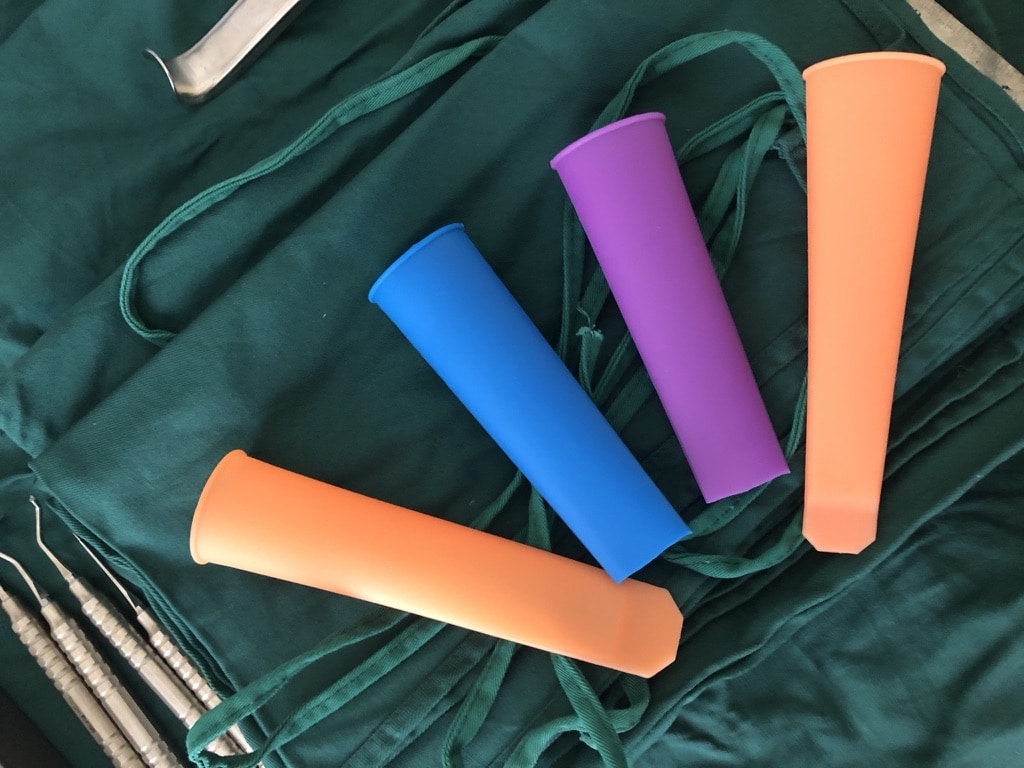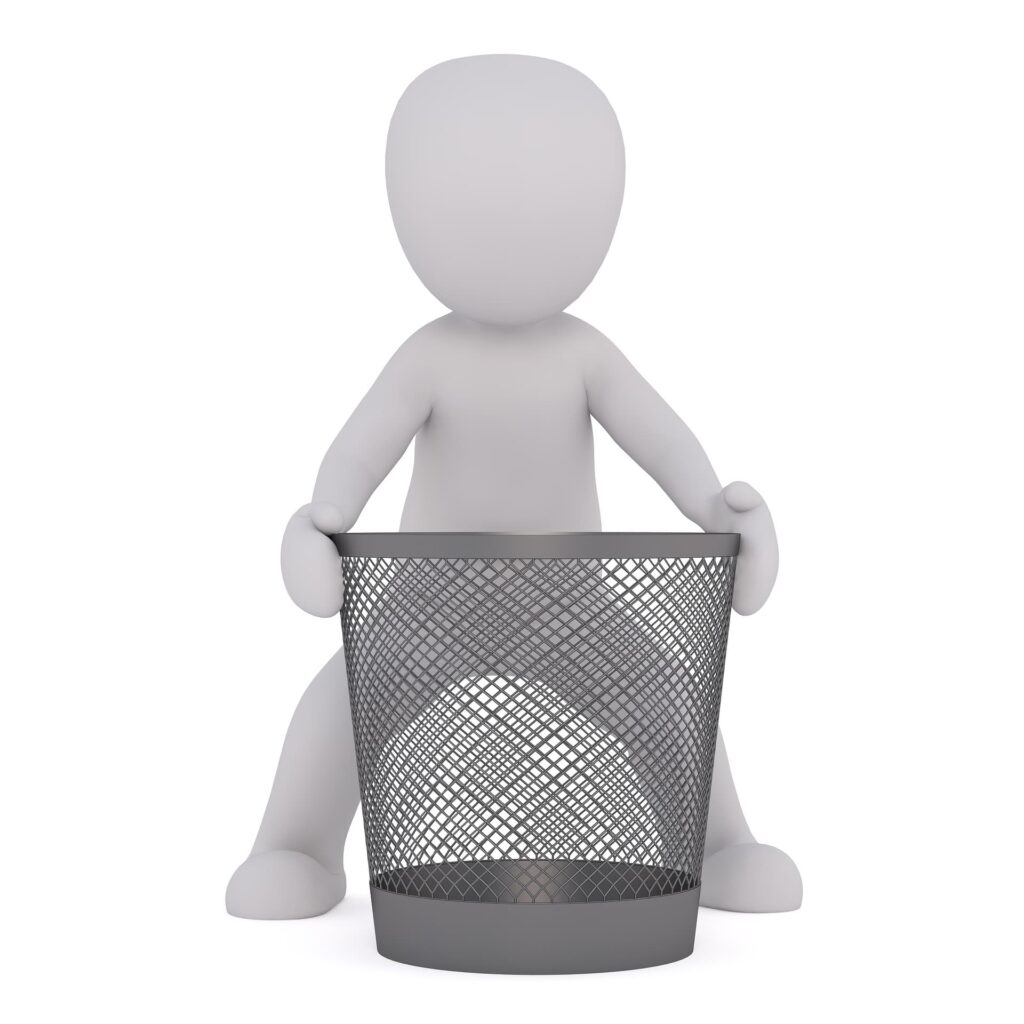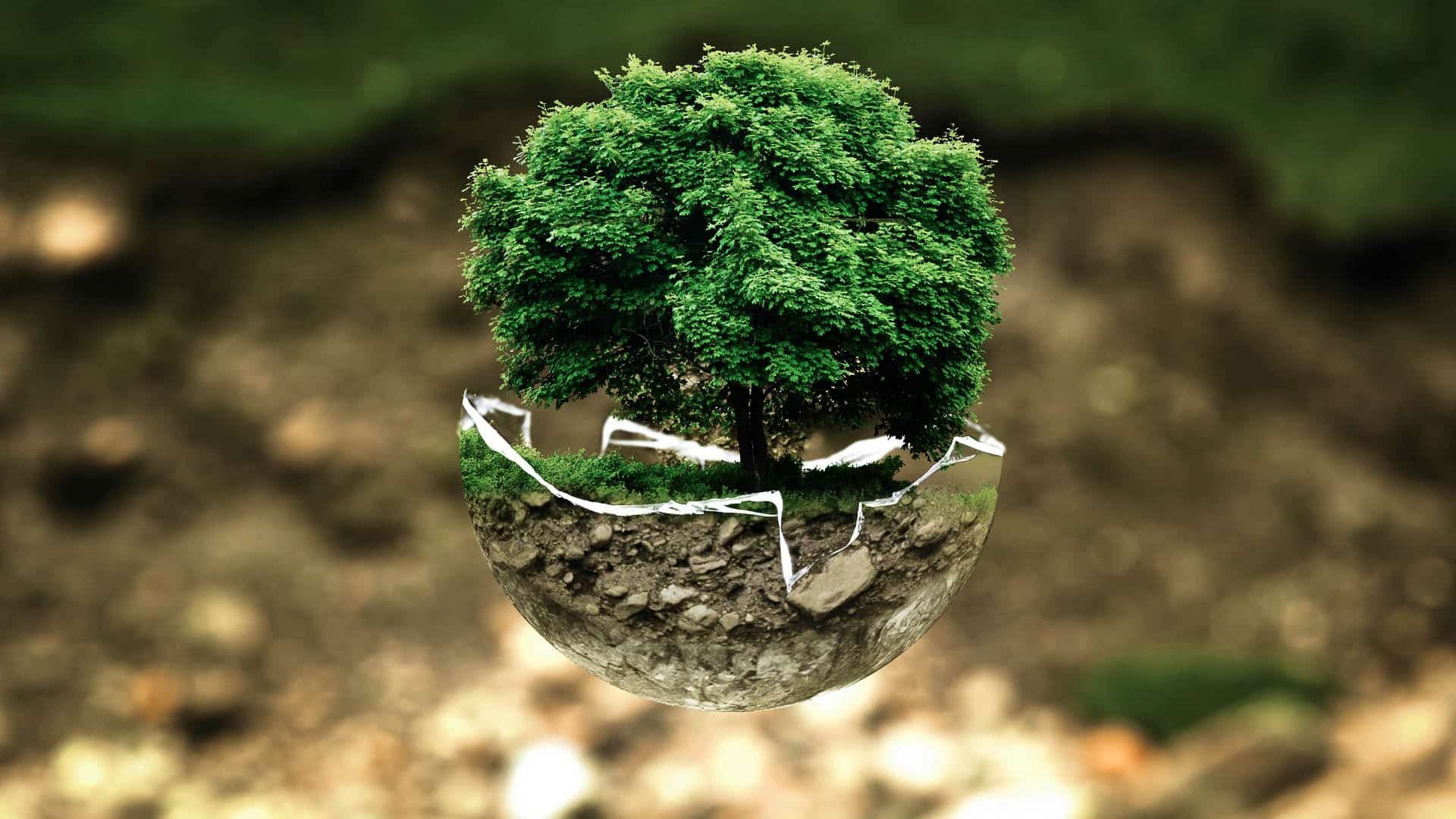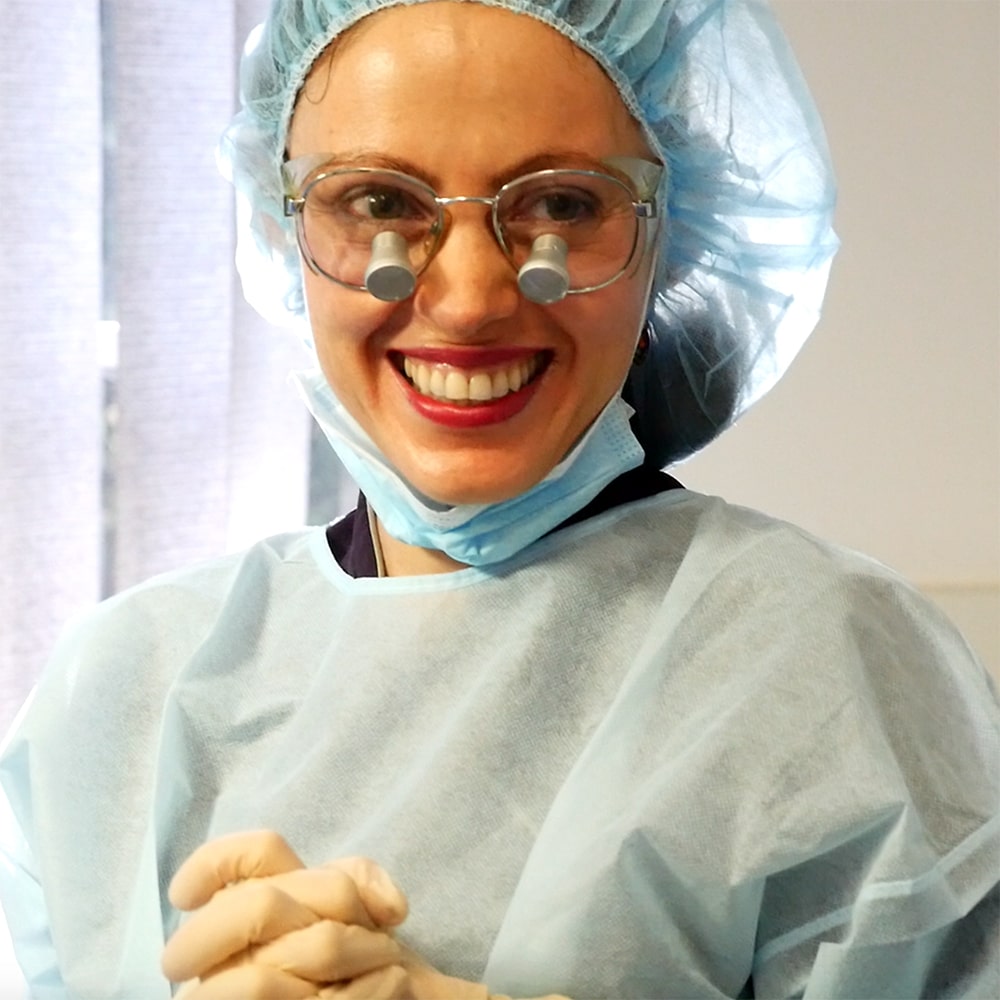We live in a world of disposable commodities. Working in the medical profession, I’ve always accepted that disposable is the norm and the only practical option available. At first glance, equipment needs to be affordable and hygienic – a sign of a progressive society with high standards of infection control, but at what cost to the planet?
We are good at dumping our rubbish into a wheelie bin each week, believing it magically disappears. It’s convenient not to think about the piles of junk, rubbish and waste produced by each and every one of us. It is estimated that Australia alone produces more than 15 tones of medical waste annually, although it’s likely this figure is underestimated. A necessary evil. Right?
Somehow it never sat well with me. When I see nurses washing instruments under a running tap or use 5 pairs of latex gloves for one patient, I question if it’s really necessary, how do these wasteful practices actually aid infection control?
I typically ponder most of my decisions and consider the alternatives before I get that lightbulb moment. Looking back over the last couple of years, I’ve clearly had quite a few of those, ultimately positioning our dental practice well down the road towards sustainable and ethical dentistry.
As you’re no doubt aware, I am a dentist, I operate a boutique surgical dental practice in Prahran East, Melbourne. The studio is like a mini hospital for patients who require oral surgery to rehabilitate their mouths with dental implants, remove wisdom teeth, as well as general dentistry of course. As you can imagine, we need to maintain the highest standards of infection control, all equipment for surgical procedures must be both practical and sterile.
What started with a simple question, ‘is it necessary to be so wasteful?’, prompted a behavioural change, and today our little practice produces minimal waste from our surgeries. What once seemed inconceivable has now become common practice.

So how did we do it? I’ve put together a summary of the steps we implemented over the years to minimise our waste and move towards more functional and sustainable practices. I surprised myself when I was able to produce 23 points when writing this blog, suggesting we have achieved much over the last couple of years. And because the changes were incremental, it hardly felt like an effort. So here we go:
Fabric surgical gowns

Like everyone else, we would buy disposable gowns, the ones that you use once and throw in the bin. It occurred to me, that back in my university days, there were “dirty gown baskets” positioned around the dental hospital for depositing worn gowns after use. Hospital staff would proceed to launder and re-issue gowns for future use. An effective process that perhaps utilizes water and energy but at least doesn’t result in potentially tonnes of plastic ending up in landfill. This recollection got me thinking, what if we take it one step further and autoclave (using elevated temperature and pressure to sterilize surgical equipment) them for surgery? So, we did! I ordered reusable fabric surgical gowns which I put through a washing cycle with the rest of my weekly washing, and we then autoclave the gowns to ensure their sterility. Not only I am not using any extra water or energy, the cotton is so much more comfortable to wear!
Cost: $44 per fabric gown in comparison to 10 disposable gowns for $20. Sure, there is a higher initial cost but it wouldn’t take long for the equation to reverse.
Fabric surgical drapes
One thing led to another. We managed to solve our gown dilemma but what about surgical drapes (used to cover surfaces during surgery)? This was a no brainer! We’d use the same autoclavable fabric for the surgical drapes. I contacted a manufacturer and asked them if they could make us some custom drapes, and guess what? They were more than happy to help. So, another tick! No more plastic disposable drapes, we now use custom made, fitted, fabric drapes.
Cost: Literally $5 per drape, even cheaper than what we were paying for plastic disposable drapes.
Silicone contact barriers
Ok, gowns and drapes seemed to be an easy solution, but the downside is they’re not see-through. Meaning, they can’t be used as surface barriers over equipment control buttons. I need to see the controls so I don’t steer the ship in the wrong direction. I had to come up with something less intuitive, time to think laterally and pioneer my own solution here. I required surface barriers that were see-through and could also be autoclaved at a high temperature. Knowing that modern bakeware is often made of silicon, and is not only convenient but also heat resistant, it occurred to me that I might be onto something. I turned to Google and after going through pages and pages of silicone cookware to see what shapes and sizes might be available, I stumbled across translucent baking mats, they were perfect, What a discovery that was! I felt like Neil Armstrong walking on the moon… well,perhaps that’s a bit of an exaggeration, but to get what I mean. They are thin, translucent and easy to cut to size. I ordered some to try, and when they arrived, they were just what the dentist ordered (too cheesy?).
Cost: $13 per baking mat – only one is required per surgery setup
Silicone handle barriers

Next challenge! Silicone was my new best friend, so I was already thinking of all the silicone possibilities. How do I cover the door handles, handpieces and light handles? Disposable plastic sleeves used to be our standard, but what now? I couldn’t use a baking mat as it’s not adhesive, so whatever I’d come up with would have to be cylindrical. A hose cut up into segments? Perhaps… I was on the right track. I hit a wall when I couldn’t find a silicone hose wide enough for the surfaces I needed to cover. Yet again, I searched and searched the world of silicone until something brilliant appeared on my screen – silicone icy pole moulds. They were perfect, I couldn’t have asked for anything better. I ordered my first set of eight, which fit perfectly over the handles and the handpieces. I was never a fan of plastic barriers, they were slippery and impaired my control over the handpieces, silicone fitted snugly and is my new best friend. Joy all around!
Cost: $14 for a set of eight which is enough for one surgical set up
Face washers hand towels
When a surgeon scrubs in and needs to wipe her hands before donning sterile gloves, she needs to dry her hands with a sterile towel. This is typically a disposable towel. We did replace them with sterilised recycled paper towels some time ago, but I knew we could do better.
It wasn’t until some years later when one of my lovely nurses said to me, “You know Helen, we use so many alcohol wipes, why don’t I use a disinfectant spray and a towel to wipe with?” I was a little too eager in adopting her idea. It seemed to make perfect sense and was in line with our philosophy. However, I found laundering hundreds of towels each week challenging so we reverted back to paper towels for disinfecting surfaces, but sometimes one idea seeds a new thought. I purchased two face towels which could be autoclaved, they’re perfect for wiping our hands- one for me and one for the nurse. Simple, practical, cost-effective and much kinder on the environment.
Cost: $2 for a face washer
Fabric surgical caps
This one is boring. I’ve got no exciting stories to tell and I kick myself for not doing it sooner. You know the disposable surgical caps that look like shower caps, the same ones that wouldn’t win a fashion award? Well, that’s what we previously used. Now we use the very stylish and reusable fabric ones to contain our unruly locks. Surgery should be no modelling contest, yet I certainly feel happier and more comfortable wearing a fabric surgical cap, knowing that it’s one less thing destined for the bin.
Cost: $5 – 10 per cap
Fabric wrappers for surgical kits

The fabric gowns and drapes put me onto a bit of a theme. Our surgical tool kits can be rather large and require large plastic autoclavable pouches to seal them for sterility. They are, as you would’ve guessed, disposable. So instead, we now use the same surgical drapes to wrap our kits in. Again, no inconvenience other than having to label them with a small sticker so that we can recognise them next time we need to use a particular kit, without compromising on sterility.
Cost $5 – 10 a drape
Recycled/compostable paper towels
OK, enough surgical stuff. As mentioned, we replaced disposable alcohol wipes and even regular paper towels with recycled ones. In my mind, not a perfect solution, but it’s still better than throwing out materials that don’t biodegrade. I do have an idea to improve on this.
Paper towels are compostable, so we could easily dispose of them into a home compost bin for a zero-waste solution. I’d rather put the towels into the ground where they bio-degrade. What prevents implementation, is the fact that they (the towels) are impregnated with a hospital-grade disinfectant, which does little to support the delicate microbial degradation required for composting. More research is required on our behalf to ensure that the disinfectant either fully evaporates or is at least non-toxic, if compost is to be used in the garden. It’s a work in progress, watch this space.
No rubbish liners
This one will blow your mind. It doesn’t even require the warning “Do not try this at home”. The opposite! Please try this at home, and I promise you will succeed. Can you imagine how many rubbish bin liners are discarded annually? Our precious rubbish is neatly packaged into a bag before it’s unceremoniously thrown into a wheelie bin. What disaster would befall us if it isn’t packaged? All hell would break loose. Just unimaginable! Well, I beg to differ.
 After extensive research on biodegradable and compostable garbage bags, I made an interesting discovery. Any rubbish bin is fully capable of containing your rubbish without a bin liner and transferring it to a wheelie bin. How did I come to this conclusion you might ask? Well, as a result of my research, I discovered that biodegradable bags aren’t necessarily as environmentally friendly as we might think.
After extensive research on biodegradable and compostable garbage bags, I made an interesting discovery. Any rubbish bin is fully capable of containing your rubbish without a bin liner and transferring it to a wheelie bin. How did I come to this conclusion you might ask? Well, as a result of my research, I discovered that biodegradable bags aren’t necessarily as environmentally friendly as we might think.
Several studies have found a lack of clear evidence that biodegradable, oxo-biodegradable and compostable materials offered an environmental advantage over conventional plastics, and the potential for fragmentation into microplastics an additional cause for concern. Compostable bags do break down fully, but only in compost, so throwing them into the landfill isn’t the best solution either. This led me to the conclusion that the most environmentally-friendly option was to ditch the bin liners altogether. No change to our procedures or processes. No inconvenience and no additional cost. Unfathomable but true! One day a perfect bin liner will be created but for now, this is the best option I could think of.
Cost: Saving on the cost of bin liners
Stainless steel cassettes for clean instruments
 Most private practices use disposable pouches to keep instruments sterile, mainly for convenience. Welcome a blast from the past, most good ideas eventually come full circle, such as stainless-steel sterilising cassettes. The first time I saw them was at a dental hospital. They seem old fashioned in the days of disposable autoclave pouches, but they work. They are cheaper in the long run and are just as easy to use, and guess what, there’s no waste! They do the job of containing instruments for autoclaving perfectly well.
Most private practices use disposable pouches to keep instruments sterile, mainly for convenience. Welcome a blast from the past, most good ideas eventually come full circle, such as stainless-steel sterilising cassettes. The first time I saw them was at a dental hospital. They seem old fashioned in the days of disposable autoclave pouches, but they work. They are cheaper in the long run and are just as easy to use, and guess what, there’s no waste! They do the job of containing instruments for autoclaving perfectly well.
Cost: $15 – $40 per cassette depending on the size
Amalgam retention suction
Amalgam from dental fillings contains a number of heavy metals, including mercury, making disposal challenging. Regular (dental) suction channels the waste straight into our waterways so it all ends up in the ocean. Hardly a responsible way to get rid of heavy metal waste. Amalgam retention suction traps metals and separates them from water. This waste builds up in a little container, which can be collected by a waste company to dispose of responsibly.
Cost: I purchased my suction many years ago for $14,000. I suspect they cost more these days
Biodegradable micro brushes
A little implement that we use in dentistry is called a micro brush. It’s a little disposable brush on a plastic stick. In the overall scheme of things, this is a relatively minor issue, and there are bigger challenges to overcome. However, change starts small. There are now products available that are made from biodegradable plastic. I’ve touched on the limitations of biodegradable plastics for dentistry already, but in the absence of a perfect solution we use these biodegradable micro brushes from the Dental supplier Bioprotect
Cost: $5.50 for a pack of 300 – much the same price as the regular ones
Biodegradable home care products
 In recent years I’ve noticed more biodegradable home care products pop up on supermarket shelves. Well done to those environmentalists making some noise. You’ve been heard. It is now economically viable for businesses to produce environmentally-friendly products to meet your demands. Here are just a few examples that we recommend to our patients:
In recent years I’ve noticed more biodegradable home care products pop up on supermarket shelves. Well done to those environmentalists making some noise. You’ve been heard. It is now economically viable for businesses to produce environmentally-friendly products to meet your demands. Here are just a few examples that we recommend to our patients:
1. Piksters dental flossers made with a plant-based, corn handle using 98% biodegradable materials. Personally, I prefer dental floss over flossers, my patients tend to disagree.
2. Piksters bamboo biodegradable and sustainable interdental brushes, which can be used instead of floss for people with large gaps between their teeth.
3. Natural Family Co. no plastic toothbrushes made from corn starch.
4. You can even buy bamboo toothbrushes at Woollies and Coles these days. You no longer have to go to an alternative health food shop and masquerade as a hippie. Even Colgate decided to jump on the bandwagon.
Bamboo cotton buds
Another cheeky little discovery at my local Woolworths store. These cotton buds are made from sugarcane stalks which would otherwise be discarded as waste. The good news is that they are even cheaper than the home brand ones.
Cost: $1.60 for 200 pack
Instrument cleaning box
This one is a no-brainier. We soak surgical instruments in a designated instrument cleaning box that allows excess water to drain safely. We’ve had one for years in our ‘steri’ room. It resides permanently in the sink. I didn’t have to think hard about this one. Dental supply companies sell these readily.
No surface barriers for general dental
I’ve spoken about surface barriers for surgeries and how some creativity was required to replace disposable plastics. How about general dentistry? It’s even easier for general practices. Despite what you might think, plastic barriers are not a must – it’s a matter of convenience. It’s important to understand that dentists have a choice between using surface barriers and simply disinfecting surfaces with a hospital-grade disinfectant after each patient, to prevent the risk of cross-contamination. In the past when I used plastic barriers, they would often twist and move, this proved to be frustrating so I would regularly remove them anyway. Now, I’ve reduced surface barriers to a minimum and rigorously disinfect instead. Minimalism might be a future trend in medicine. Or at least it should be!
Cost: Neither here nor there, but we’re not using plastics.
No cups for rinsing
A practice can effortlessly replace disposable plastic cups with biodegradable or even compostable corn cups. However, as I have mentioned, it’s better to use no plastic rather than biodegradable plastic. Furthermore, authorities advise that rinsing after dental treatment doesn’t necessarily limit infection. To ensure that our patients are comfortable after their treatment, I rinse any debris that might be left in their mouth with water from a triplex syringe. Our patients seem to have transitioned well to this change and are understanding of infection control requirements.
Cost: Saving on disposable cups and living the minimalist dream
Reusable masks
The COVID pandemic has resulted in unprecedented PPE shortages around the world, not only amongst the community but also the medical profession. Thankfully, we have adequate stocks of PPE, but in planning for the future, if this pandemic goes on for longer than expected, we’d be wise to have a plan B. Industries have been very creative with the manufacturing of masks. I’ve discovered that there are N95 hospital-grade reusable masks awaiting TGA approval. This means that reusable masks could replace disposable ones, naturally we are keen to try them if and when they are TGA approved.
Cost: $20 per mask
Recycle scrap metal
This one may seem counter-intuitive. Not many people would think that old dental crowns can be recycled, but they can. When a dentist removes your old metal crown and replaces it with a new one, they can either discard the scraps in the bin or sterilise and send them off to a company that recycles the precious metals. All the metals that are reclaimed, namely gold, silver, platinum and palladium, can be reused so there is a little less metal being mined from the land. It should be mentioned that old crowns essentially belong to the patient but just about every patient wants to have nothing to do with broken scraps, so they happily leave scraps with us to dispose of. It makes sense to recycle them rather than discard them. Similarly, old stainless-steel dental instruments can be taken to a scrap yard for recycling.
Cost: neutral
Laminated medical history forms
I’ve been talking about what we do in the clinic, as I spend more time there than anywhere else. Now, lets move out of the surgery room into the rest of the practice and discuss other steps we’ve implemented to minimise our footprint. Every new patient fills out a medical history form on admission. Our receptionist had the idea to laminate a few forms to make them reusable, we purchased non-permanent markers to go with the laminated forms and have been using them ever since.
Cost: $2.50 per form
Paperless office
I hear our practice manager say to our patients, “We run a paperless office. I will email you this or that, you can fill this out electronically, put an e-signature here.” Well, years of investing in technology, revising and tweaking out processes and protocols have resulted in a near paperless office. We just have to convince some of our affiliates that paperless is achievable.
Cost: the cost of advancing with the times
Recycled paper business cards
It probably comes as no big surprise now, but some years ago I discovered that all business stationery can be printed on recycled paper using plant-based ink, which fits perfectly with our ethos. We found Black Rainbow printing, which was able to assist us with our requirements. As I said, we print very little but rest assured that our business cards are printed on 100% post-consumer recycled paper.
Cost: The cost of recycled paper is higher than conventional. However, an extra $20 – 40 is justifiable
Compost recycled paper towels
Perhaps I shouldn’t claim this one yet, but we are nearly there in making it a reality, so I’ll include it. As previously mentioned, we use 100% recycled paper towels at the practice, to wipe our hands or to disinfect with. The challenge now is to keep those paper towels out of the bin and to compost them in our household compost once we can confirm that it is safe to do so.
Cost: $0
Encourage wholefood plant-based nutrition
There is a plethora of evidence linking the four most prevalent western diseases, being coronary heart disease, diabetes, autoimmune diseases and certain types of cancer, with animal protein consumption. There are other benefits to a wholefood plant-based nutrition. Considering the evidence, as a medical practitioner, I feel that it’s irresponsible to promote consumption of animal products, it is my obligation to advise our patients accordingly and assist them with a transition to a healthier lifestyle.
 We take it as a given that animals have to be sacrificed for the good of medicine but when we look closer, many animal models are hardly relevant in humans. Sure, a lot of knowledge has been derived from animal research in the past. However, animals have different metabolisms that are not easily translatable to human medicine. Additionally, many animal studies give false positives and false negatives. We can’t change the past, and we might feel powerless as practitioners in changing ingrained practices overnight, but we have to redefine how we think about the ethical treatment of animals in medical experiments. With the technology that’s now available, more effort could be directed towards relevant and scientifically sound non-animal models in the future.
We take it as a given that animals have to be sacrificed for the good of medicine but when we look closer, many animal models are hardly relevant in humans. Sure, a lot of knowledge has been derived from animal research in the past. However, animals have different metabolisms that are not easily translatable to human medicine. Additionally, many animal studies give false positives and false negatives. We can’t change the past, and we might feel powerless as practitioners in changing ingrained practices overnight, but we have to redefine how we think about the ethical treatment of animals in medical experiments. With the technology that’s now available, more effort could be directed towards relevant and scientifically sound non-animal models in the future.
Make in-house plant-based lunches
In line with the above point, we not only encourage our patients to look at their health but we try to cultivable a healthy environment at the practice. We offer healthy, wholefood plant-based lunches to our staff. Whoever wants to join and participate is welcome. It’s one of those fun things that we do at the practice.
Conclusion
We still have a long way to go. For instance, we still haven’t found a solution to replacing latex gloves with a more environmentally-friendly alternative. However, by implementing small changes over a period of time, we’ve encountered little resistance from staff members. When those changes result in positive, tangible outcomes, the adoption of those practices quickly become habitual.
While it may be easy to say there are no downsides to an ethical dental practice, that is simply not true. We are creatures of habit and implementing change is never easy. There can be resistance and a desire for things to stay the same. However, once the change is made, it quickly becomes the new norm. We only have one planet and we do not have to compromise on safety or sterility in medicine in order to look after it.


